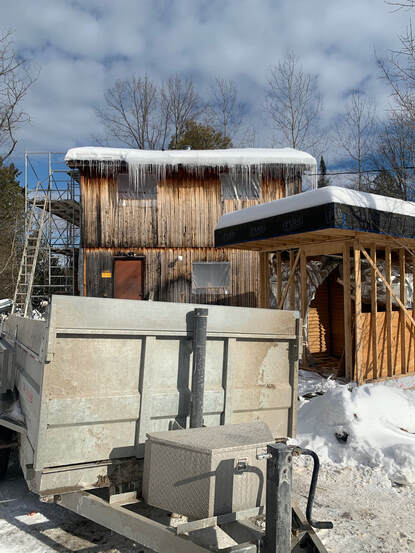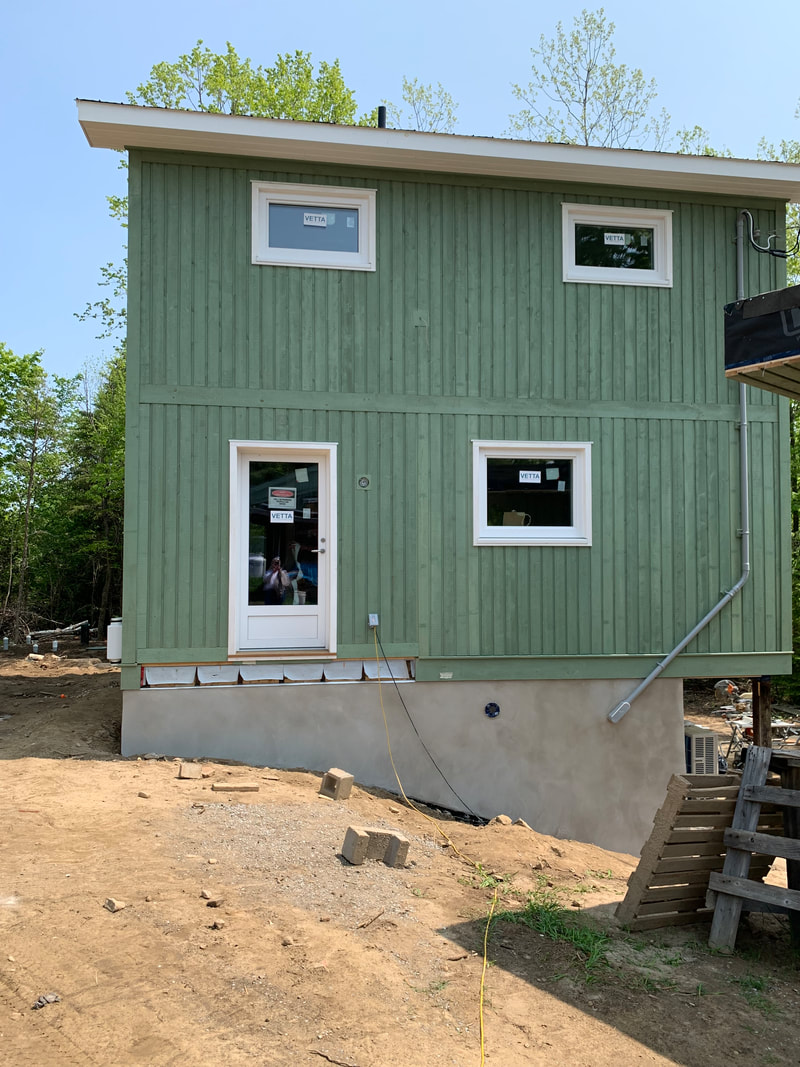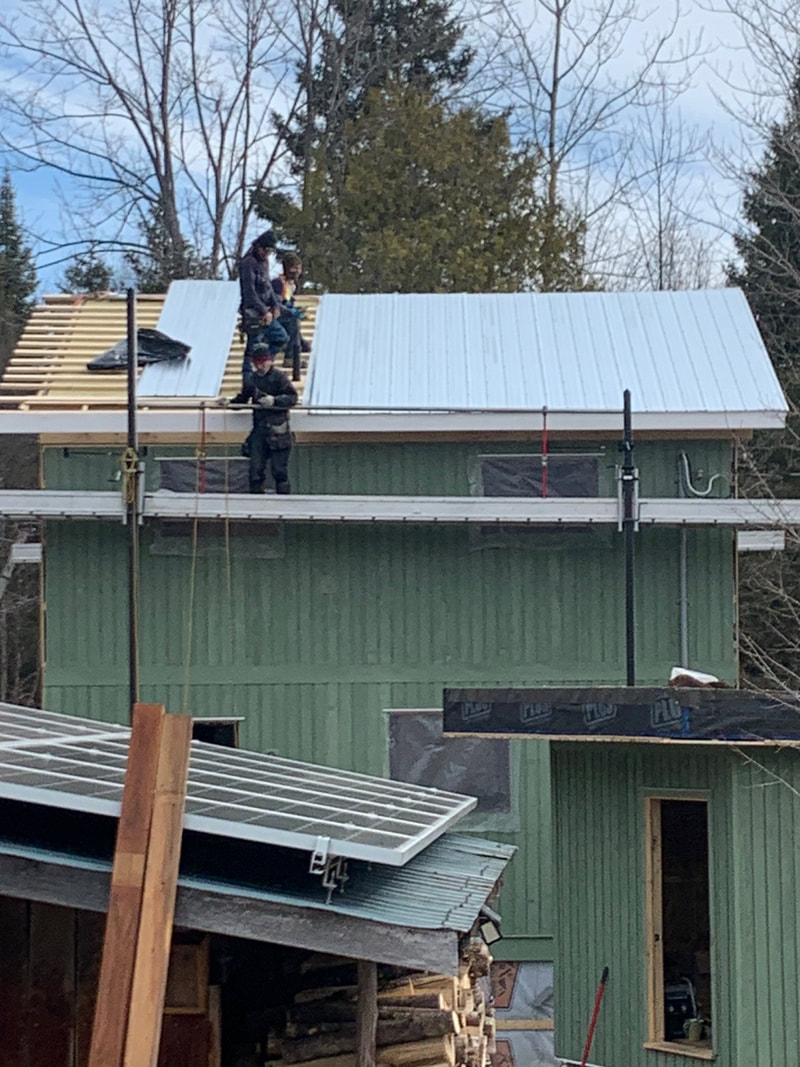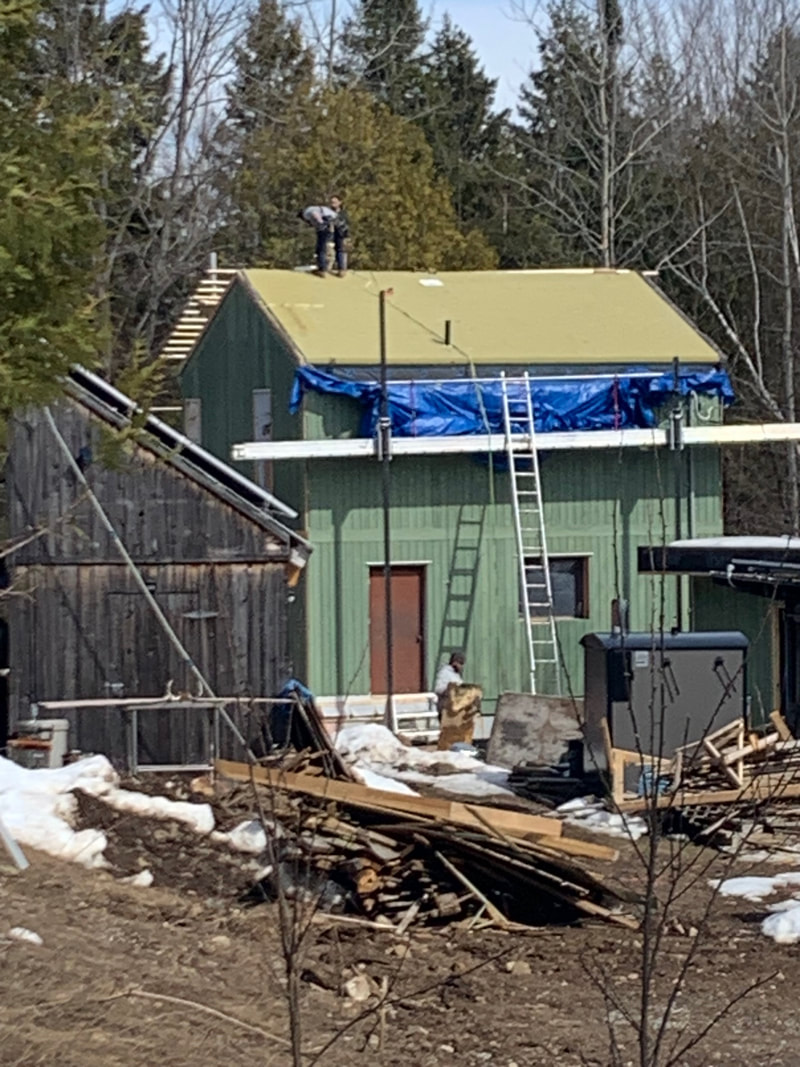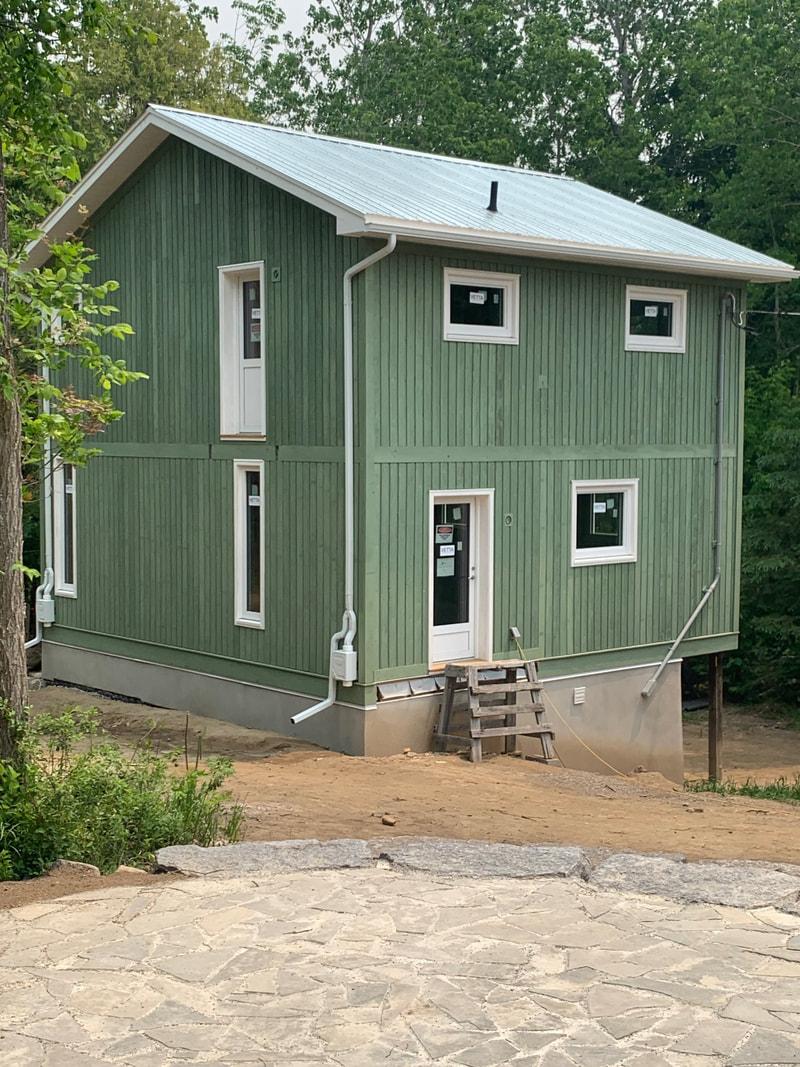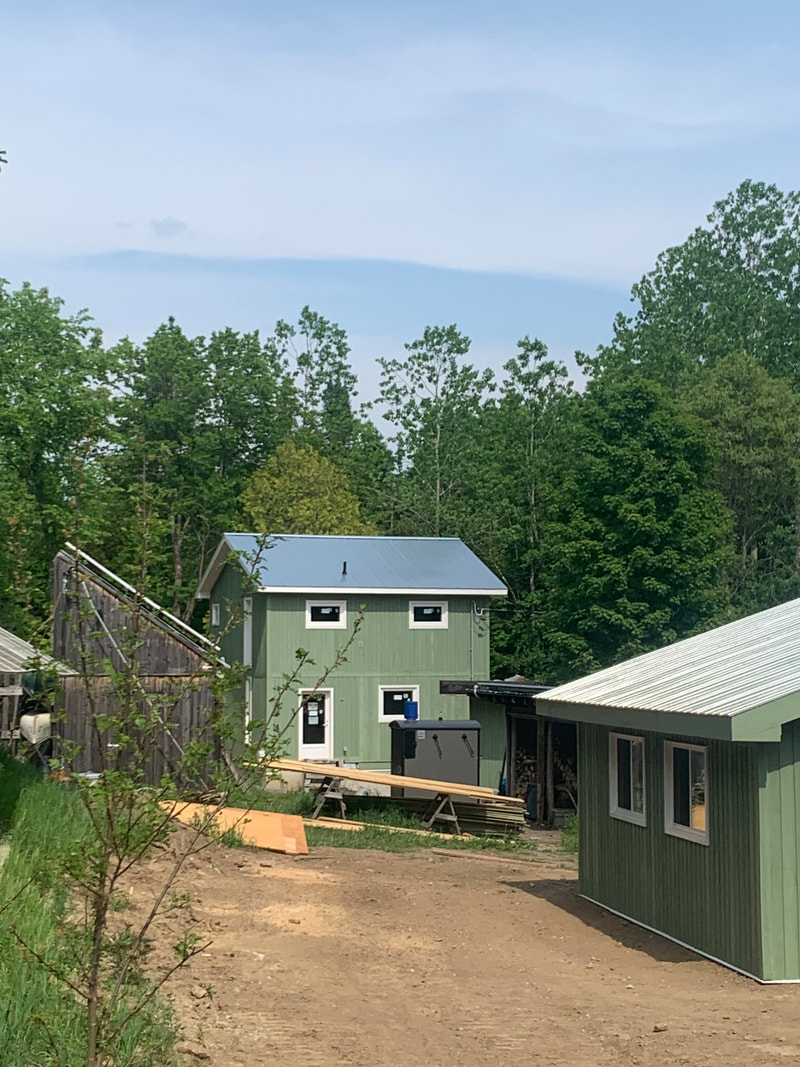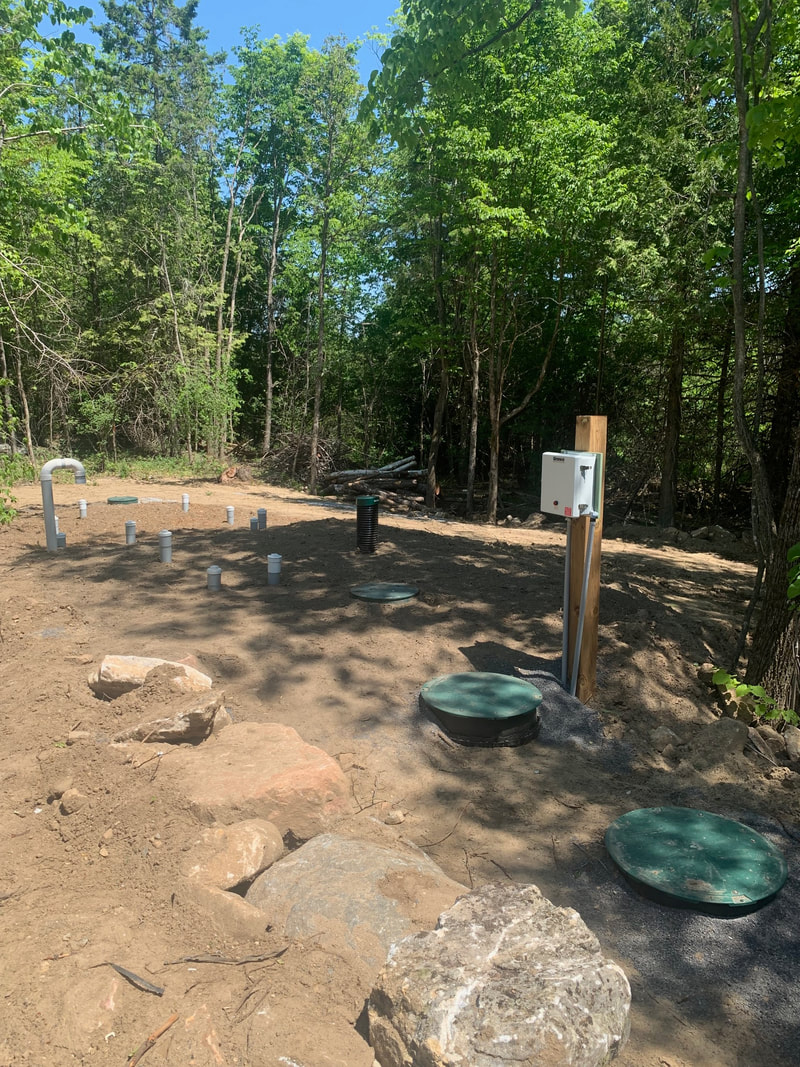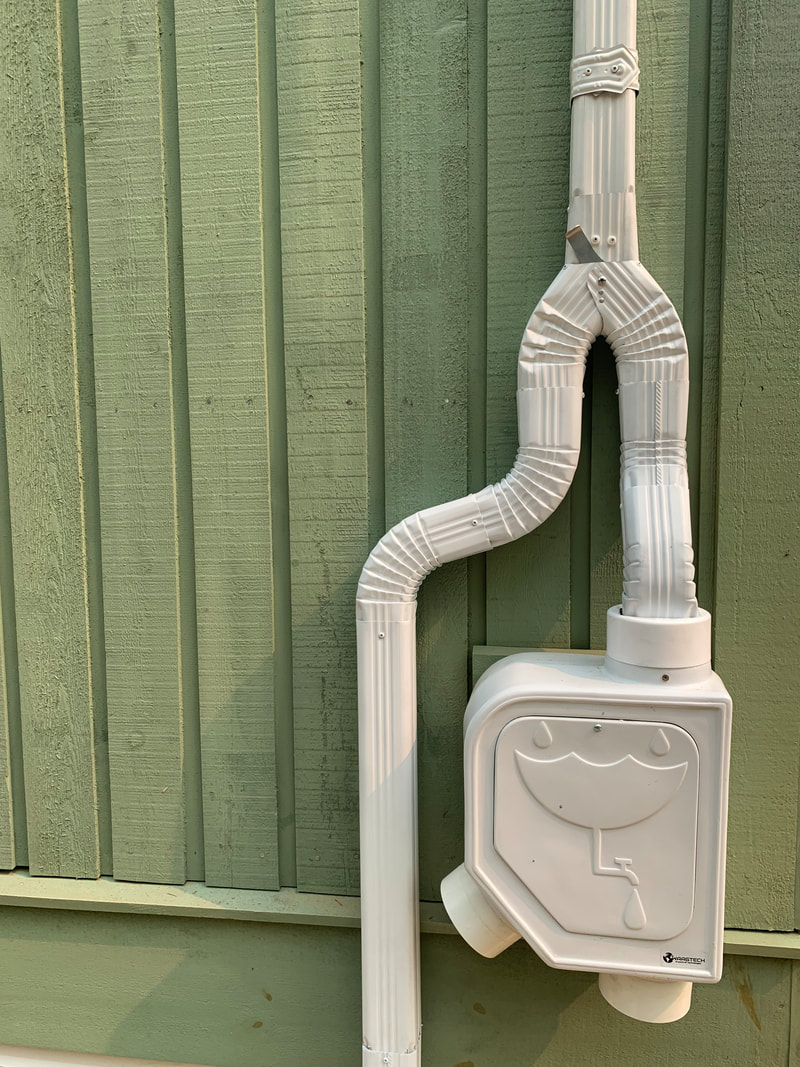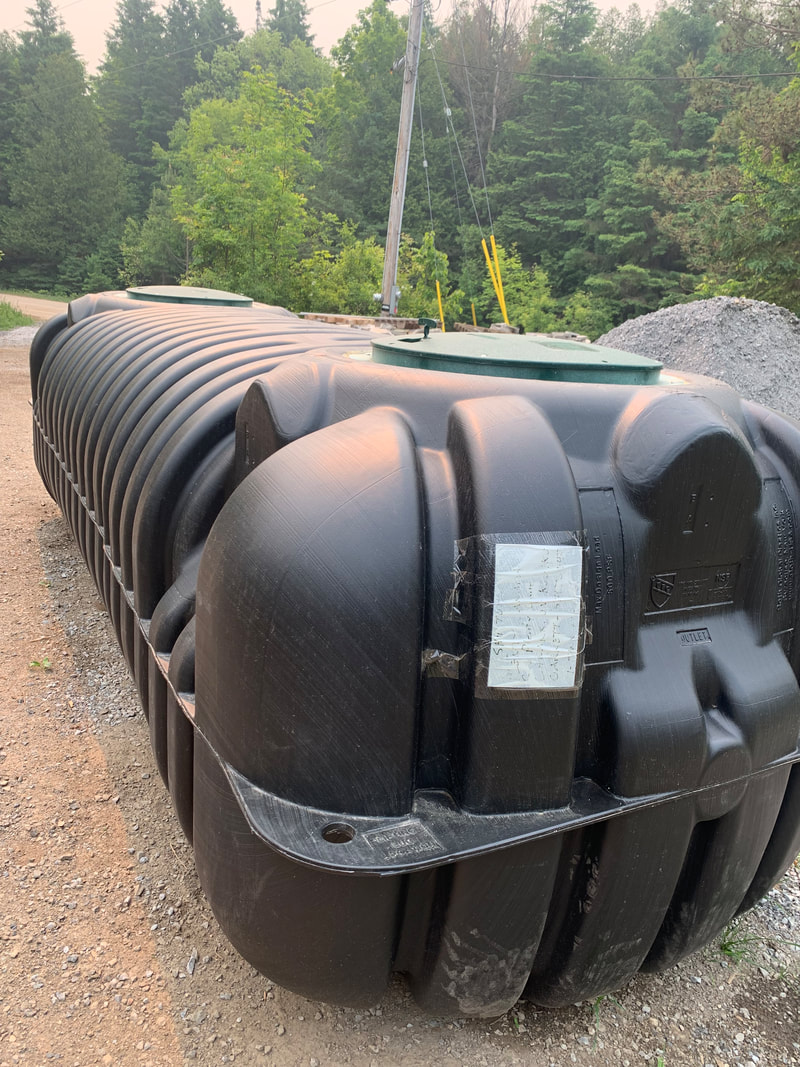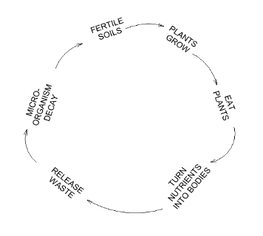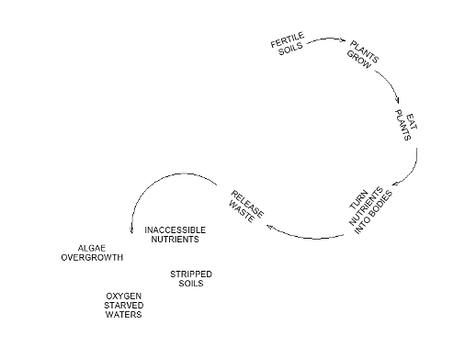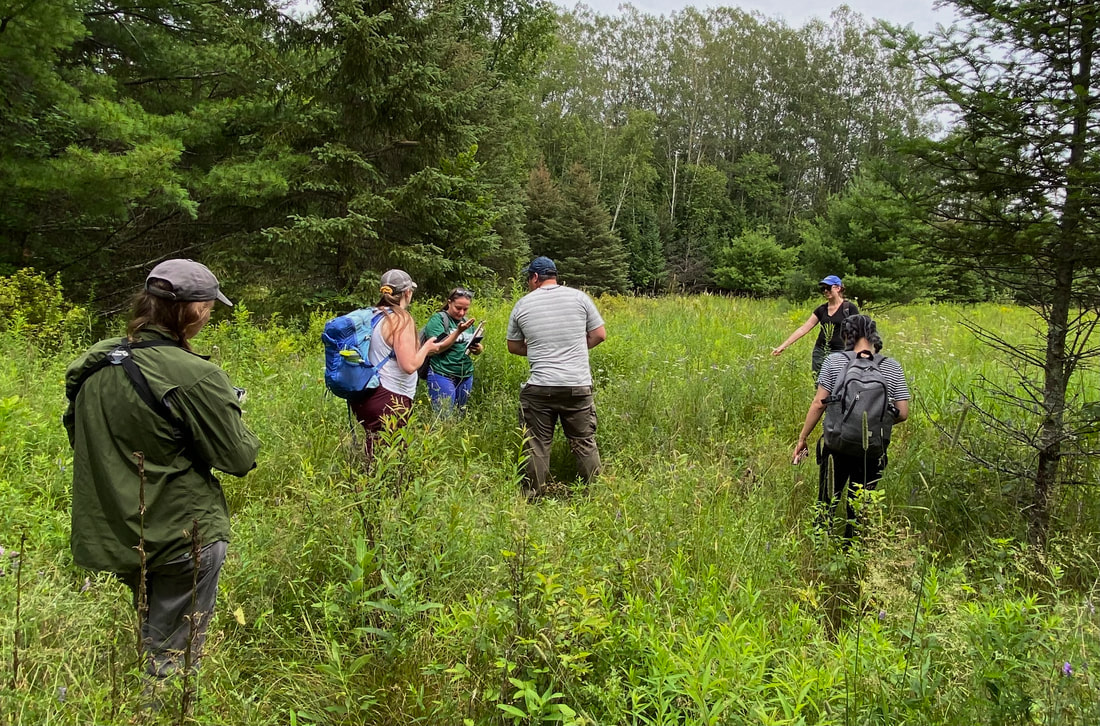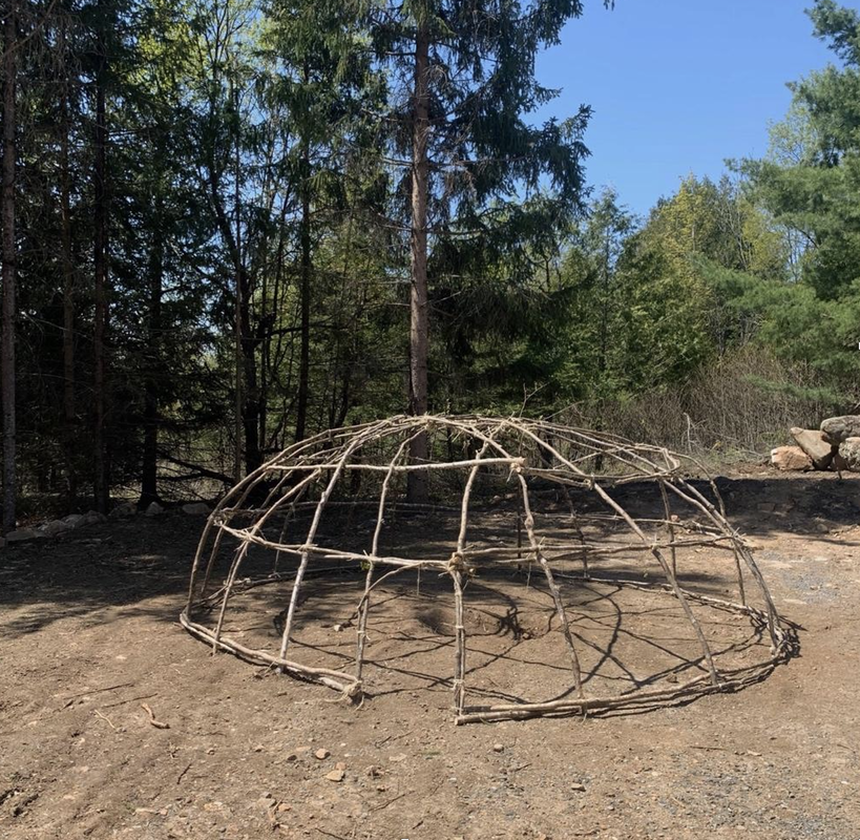 It is almost surreal to think that I'm writing this letter to you now. After years of hard work and cooperation, and so many incremental improvements (many of which were talked about in this Contact newsletter), the Plenty Canada CampUs is almost ready to be unveiled. Really, I could act even more surprised that we pulled this off, but that would imply that our success was due to luck. In actuality, it was due to nothing more than the combined determination and cooperation of many exceptional people -- including people like you, our donors and supporters! It might be a cliche, but hard work really does pay off. For those of you not already in the know about how this project came to be, at this point it might be valuable to give you a bit of a “crash course” on the CampUs -- its origins, its development, and our plans for its future. Given that we had a second building on our property which was rarely used, and a host of workshops and other community outreach activities that could do with an expansion, we thought it would be a great idea to transform that building into a space dedicated to holding these workshops, increasing Plenty Canada’s capacity to act as a hub for Indigenous and environmentalist activities in the region. Of course, this plan would have never gotten off the ground without the Federal Economic Development Agency for Southern Ontario -- a thousand thanks to them for believing in the potential of this project. We thought that a gradual approach would work best, so we set out to work on adding incremental, environmentally sustainable improvements to Plenty Canada’s HQ: environmentally sustainable windows and siding, new sustainable heating / water systems, newly furnished rooms for classes and lodgings, and much more. I hope you'll stick around to read some of the following articles, which will go into more detail about the specifics. As of right now, the CampUs is ready for use, but will continue to evolve, adding even more features such as a kitchen area for Indigenous cultural food projects. As a whole, the building is an expression, a culmination, of both Plenty Canada's core values and the principle of “Two-Eyed Seeing” — using Indigenous knowledge and Western science to solve societal issues. Using scientifically honed building materials and additions, we've created a space that will ideally service as a meeting ground for Indigenous and non-Indigenous peoples from all walks of life, a space where they can educate themselves on the work required for true reconciliation and environmental sustainability, and to use this education to better the world around them. Thank you again for cheering us on throughout this entire process. Please enjoy the following issue of our newsletter—a “victory lap” of sorts—and look forward to future updates on the space as it grows to even greater heights. In particular, we will be holding an Open House event in the fall, so please stay tuned to your email and Plenty Canada’s website! Chi Miigwech. Niá:wen. Merci. Thank you. Larry McDermott, Executive Director, Plenty Canada
0 Comments
Though we’re still very much in the midst of making improvements to the Land-Based Learning Centre that constitutes the Plenty Canada CampUs, the area still looks like a construction site, I thought I’d draft a quick update on our progress so far as we work toward completion in the fall. To provide a little perspective on work completed this past winter, here is what the Makwa Inn (second building in the CampUs complex) looked like mid-January before construction on the building envelope got in full swing: The most notable sustainable improvements can’t be seen in the photo — these are hidden under all the green siding. What is under the siding and galvanized steel roof is a building envelope that was engineered to be a continuous air barrier. Air barriers are one of the key ways in which all buildings can reduce energy waste and cost while preventing the negative environmental impacts of heating and cooling structures. The term “air barrier” doesn’t just refer to one material; it is a system of materials that are installed in a specific manner to stop air leakage caused by variations in air pressure and temperature. The more openings there are in an air barrier, the more leakage a building will have, and the more energy is wasted. Given that we were looking to mitigate our overall impact on the environment when renovating the building, installing a continuous air barrier was essential. For an air barrier system to work optimally, the system must be continuous and include insulation with a high R value. (R value is the rating given to insulation indicating its ability to resist heat flowing through it.) In addition to reducing costs of heating and cooling, a continuous air barrier contributes to reducing greenhouse gas emissions while preventing pollutants, debris, insects, and other animals from finding ways in through openings in the building envelope. Our building team was up to the task of creating a continuous air barrier on all four exterior walls as well as the roof. The attention to detail was immense, in order to ensure that the components installed will prevent air from passing through the barrier. This was a major undertaking, with a team of four crewmembers working full time for over three months to complete the project this winter. The following photos show the process of creating the air barrier around the building envelope: Next, the team went on to make great improvements to the roof, to prevent air leakage and infestation from local wildlife in the future. We initially had budgeted for minor work to the roof, but on closer inspection we realized that, over the years, wildlife had occupied the attic, leaving little insulation. We undertook a plan to make improvements to the roof, which has prevented air leakage and increased the quality and quantity of insulation, with a combination of a 6” depth of Roxul “Comfortboard” and dense pack cellulose. After the envelope was completed in April we prepared for the window and door installation. One of the most common, and preventable causes of wasteful air leaks in buildings is around doors and windows. The team applied multiple layers of sealants and tapes, to again create “air barriers” around all windows and doors to prevent air leaks. These efforts contribute significantly to reducing home heating and cooling costs and are a big part of reaching net zero emission goals. The work on the CampUs will continue for the foreseeable future. As we progress, we’ll be sure to share updates with you.
We are proceeding with the net zero certification and will look to install a solar apparatus onto the roof of the Makwa Inn that will produce enough energy to completely offset the energy use of all appliances, including the new heat pump, HRV (Heat Recovery Ventilator), ERV (Energy Recovery Ventilation) and air cleaning systems. We’re very much looking forward to having this work recognized with Net Zero certification. In the coming months, Plenty Canada will complete multiple landscaping projects, including native plant installations, a new entrance, a porch and stairs, and the completion of the interior of the Makwa Inn, with new drywall, paint, and local white cedar trim for windows and doors. In August, new kitchens made in Canada with Canadian yellow birch, and local black cherry countertops will be installed, creating a beautiful place to gather and practice Two-Eyed Seeing, where knowledge is shared with generosity, kindness, and respect. — Louise Sherwood, sustainable building coordinator 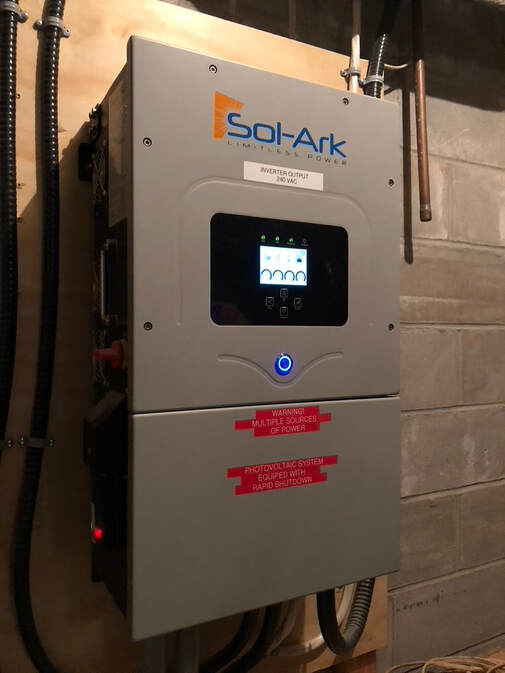 Sol-Ark inverter. Sol-Ark inverter. Plenty Canada doesn’t just want to create a new educational space that symbolizes environmentally friendly aspirations — we want to put in the work in order to turn the building into a living embodiment of those principles. Which is why, throughout the renovation process we strive to work towards a Net Zero certification for the new building. As you may know, buildings that have obtained a Net Zero rating produce net zero greenhouse gas emissions, rendering them completely environmentally friendly. To accomplish net zero goals, Plenty Canada is following the guidelines recommended by the Net Zero Home Labelling Program, created and continually refined by the Canadian Home Builders' Association. In essence, the CHBA provides a series of specific technical requirements that are needed to recognize a new home as Net Zero, or an existing building as Net-Zero ready. Once the building has been built or renovated, its Net Zero status needs to be verified by multiple sources, including the CHBA, the builder or renovator, a net zero service organization, and a qualified net zero energy advisor. As you can probably tell, it's not exactly a quick and uncomplicated process (especially when it comes to retrofitting old buildings that weren't created to match these standards), but Plenty Canada was eager to take on this challenge. Already, the team has made fantastic progress. One of the metrics determining the potential efficiency of a net zero building is the “airtightness” of the building, measured with a decimal number. Before the organization started the renovations, the building was tested by HomeSol and the result was high, rated as a 9. After installing the continuous air barrier, installed new windows and doors ensuring air tightness to the best of our capabilities, we had HomeSol return to do another test on May 24. This test revealed we had nailed our net zero qualifying numbers, with a reduction from 9 to .75! (a lower number indicates a greater degree of air tightness). We then decided to proceed with an Aero Barrier application that promised to enhance airtightness by filling any smaller openings that were previously not filled. After the Aero Barrier was applied the number was reduced to 0.24 — the equivalent of adding up all the tiny air leaks throughout the building, that equals a 5.9 square inch hole. As long as the continuous air barrier remains intact, the building is approximately 75 percent more air-tight than what is required by the Ontario Building Code. With the addition of solar energy supply, the Makwa Inn is well on its way to accomplishing Net Zero Energy Certification. — Breton Campbell & Louise Sherwood Editor's note: Garrett Johnson of Plenty Canada designed and installed three systems that follow the conservation pattern demonstrated by nature. Nature operates on what is called a closed loop system, where nothing is wasted, only returned to the cycle itself to sustain and strengthen the system. The three systems return what is often considered waste: rainwater and human sewage. We asked Garrett to enlighten us with some knowledge about these fascinating systems that are now part of Plenty Canada’s land-based learning centre. Constructed WetlandPart of our responsibilities when existing with other non-human species is to respect our impact when releasing waste into the environment. Rural properties are generally not connected to centralized infrastructure like sewers in the city. Instead, they depend on septic systems or outhouses to dispose of their waste. Both approaches end up releasing our sanitary waste onto or into the ground, and often the contaminants and nutrients from our bodies end up in groundwater supplies or surface water supplies. In many instances, it is desirable to have an extra level of treatment for these sewage systems beyond a standard absorption trench system. In Ontario, these systems are all proprietary method that require ongoing maintenance agreements with delegates of suppliers. There is currently no non-proprietary method for an extra level of treatment. Plenty Canada designed and constructed a system called a “constructed wetland” or “engineered wetland,” which is essentially a sand filter in a basin in which the underground root zone of plants stays permanently saturated, to allow wetland plants to thrive and help out with the treatment of water. The system at Plenty Canada was not the first in the region — the Rideau Valley Conservation Authority office uses a similar system for their sewage treatment. Rainwater Harvesting System Thousands of litres of clean water fall from the sky onto your house every year. The rainwater harvesting system at Plenty Canada’s Makwa Inn safely collects and stores this water for use inside the house before using it and releasing the water back to the earth. This system is intended to be used as an example to showcase an alternative approach to supplying our homes and bodies with clean water. Given that many remote rural communities no longer have clean sources of drinking water due to industrial and agricultural pollution in ground and surface waters, this could act as a viable alternative method of gathering water. North Americans often view rainwater as a hazardous source, however, in other countries the perception is often quite different. In Australia, for example, millions of modern homes use rainwater either as a supply to offset potable use, or as the sole source of water with city infrastructure as a backup. With a few simple guidelines, it is easy to collect and store a safe supply of rainwater that should not pose a risk to health — and, with a bit more filtration, can be a great source of potable water. These small-scale systems can have huge benefits to municipal infrastructure and can also act as a path toward self-sufficiency in areas that are not connected to a municipal supply. Composting Outhouses
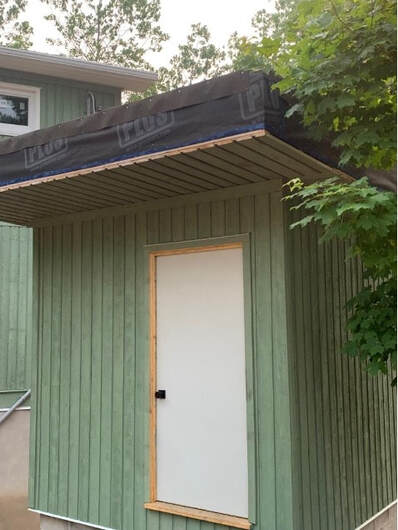 Our first composting outhouse will be completed with a living roof, a wheel chair accessible ramp and full accessible bathroom inside. Our first composting outhouse will be completed with a living roof, a wheel chair accessible ramp and full accessible bathroom inside. Plenty Canada has built a composting outhouse as a small-scale solution to this issue. The waste from visitors to the facility will be collected, stored, safely converted to stable compost (as in, a form that does not readily leach nutrients into groundwater) and put back onto the land. While Plenty Canada has not yet progressed to grow food with outhouse compost, we will showcase the methods which people (or groups of people) can safely close the nutrient cycle. — Garrett Johnson, sustainable building (water management system) Though there is an electric charging station within a 20-minute drive from Plenty Canada (a set of public use units in Perth), only having one charging station within this fairly spread-out rural area often comes with its own unique difficulties. For instance, tow trucks lugging in electric cars that couldn't make it to a charger in time are a common occurrence around the Lanark and McDonald's Corners area; it seems that even veteran drivers of these vehicles can often have trouble navigating between the sparse charging stations that dot the countryside.
This is merely an anecdote, of course, but it speaks to the deep need for robust infrastructure to support alternatives to fossil fuels, especially in areas of the country that are often overlooked in this regard. Now that Plenty Canada has firmly established itself as a carbon-negative organization, a living testament to the viability of solar energy, they would also like to become a local advocate for electric vehicles as well. As a result, Plenty Canada has recently been researching the potential installation of an EV charging station to accompany its new CampUS. Given that the organization expects a surge of new visitors to the office after the CampUs has been opened, now is the perfect time to offer a much-needed utility to both new friends and dedicated supporters. And with more and more vehicles becoming electric, the new chargers will, ideally, both support and hasten this trend, sending a message to the entire country that a world without fossil fuels is very much within our reach. — Breton Campbell, senior writer How will Plenty Canada’s project managers utilize the CampUs as a land-based learning centre? “Plenty Canada's environmental stewardship activities are wide-ranging but all are connected by the foundation of “Two-Eyed Seeing” — weaving Indigenous and Western knowledge systems. The improved and expanded spaces at the CampUs will allow us to bring more people of all ages and backgrounds together to learn on the land about our responsibilities to each other and the natural world. Plenty Canada’s staff is excited to be able to expand our in-person land-based programming with Indigenous communities, local schools, community groups, conservation and environmental organizations, and the general public.” — Emily Morris, Assistant Manager, Environmental Stewardship “Plenty Canada is dedicated to intergenerational learning, with programming dedicated to supporting young people as they build their capacity to contribute to society. At the same time, we are always benefitting from their fresh ideas and enthusiasm to make a difference in the world! “Plenty Canada’s school and youth programming will benefit from all aspects of its CampUs, from the beautiful new accessible bathrooms, sweat lodge, and outdoor classroom, to the leading examples of green building systems supporting the indoor learning spaces that are available to participants.” — Joanna Jack, Youth Programming Project Manager "Through our conversations with many leaders working toward Indigenous food sovereignty we learned that gatherings that involve hands-on learning, relationship building, knowledge sharing, and mutual support are very important to their work. The new beautiful indoor and outdoor spaces will allow Plenty Canada to host these gatherings to support these goals.'' — Dr. Rosie Kerr, Ginawaydaganuc post-doctoral, Mitacs Intern |
|
-
Home
- Donate
-
Projects
-
Canada
>
- Plenty Canada CampUs
- The Healing Places
- Two-Eyed Seeing Bird Knowledge
- Niagara Escarpment Biosphere Network
- Greenbelt Indigenous Botanical Survey
- Great Niagara Escarpment Indigenous Cultural Map
- Ginawaydaganuc Indigenous Food Sovereignty
- Indigenous Languages and Cultures Programs >
- Wild Rice
- Good Mind Grappling (partnership)
- Ginawaydaganuc Village (partnership)
- Youth Programming >
- Americas >
- Africa >
-
Canada
>
- News
- Resources
- Partners
- Contact Us
Our Location266 Plenty Lane Lanark, Ontario Canada K0G 1K0 (613) 278-2215 |
Donate to
|
Subscribe to our Newsletter |


